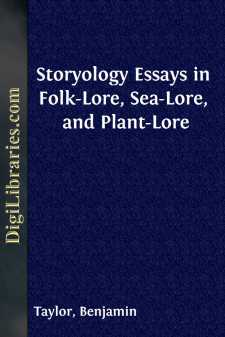Categories
- Antiques & Collectibles 13
- Architecture 36
- Art 48
- Bibles 22
- Biography & Autobiography 813
- Body, Mind & Spirit 142
- Business & Economics 28
- Children's Books 17
- Children's Fiction 14
- Computers 4
- Cooking 94
- Crafts & Hobbies 4
- Drama 346
- Education 46
- Family & Relationships 57
- Fiction 11829
- Games 19
- Gardening 17
- Health & Fitness 34
- History 1377
- House & Home 1
- Humor 147
- Juvenile Fiction 1873
- Juvenile Nonfiction 202
- Language Arts & Disciplines 88
- Law 16
- Literary Collections 686
- Literary Criticism 179
- Mathematics 13
- Medical 41
- Music 40
- Nature 179
- Non-Classifiable 1768
- Performing Arts 7
- Periodicals 1453
- Philosophy 64
- Photography 2
- Poetry 896
- Political Science 203
- Psychology 42
- Reference 154
- Religion 513
- Science 126
- Self-Help 84
- Social Science 81
- Sports & Recreation 34
- Study Aids 3
- Technology & Engineering 59
- Transportation 23
- Travel 463
- True Crime 29
Our website is made possible by displaying online advertisements to our visitors.
Please consider supporting us by disabling your ad blocker.
Storyology Essays in Folk-Lore, Sea-Lore, and Plant-Lore
by: Benjamin Taylor
Categories:
Description:
Excerpt
STORYOLOGY.
I.
What is a myth?
According to Webster, it is 'a fabulous or imaginary statement or narrative conveying an important truth, generally of a moral or religious nature: an allegory, religious or historical, of spontaneous growth and popular origin, generally involving some supernatural or superhuman claim or power; a tale of some extraordinary personage or country that has been gradually formed by, or has grown out of, the admiration and veneration of successive generations.' Here is a choice of three definitions, but not one of them is by itself satisfying. Let us rather say that a myth is a tradition in narrative form, more or less current in more or less differing garb among different races, to which religious or superhuman significations may be ascribable. We say 'may be' ascribable because, although the science of comparative mythology always seeks for such significations, it is probable that the modern interpretations are often as different from the original meaning as certain abstruse 'readings' of Shakespeare are from the poet's own thoughts.
In their introduction to Tales of the Teutonic Lands, Cox and Jones declare that the whole series of Arthurian legends are pure myths. These tales, they say, can be 'traced back to their earliest forms in phrases which spoke not of men and women, but of the Dawn which drives her white herds to their pastures'—the white clouds being the guardians of the cattle of the Sun—'of the Sun which slays the dew whom he loves, of the fiery dragon which steals the cattle of the lord of light, or the Moon which wanders with her myriad children through the heaven.' It is claimed that 'a strict etymological connection has been established' with regard to a large number of these and similar stories, 'but the link which binds the myth of the Hellenic Hephaistos with that of the Vedic Agni justifies the inference that both these myths reappear in those of Regin and of Wayland, or, in other words, that the story of the Dame of the Fine Green Kirtle is the story of Medeia, and that the tale of Helen is the legend of the loves of Conall Gulban. Elsewhere one reads that in the myth of Endymion, the Sun who has sunk to his dreamless sleep, the Moon appears as Asterodia journeying with her fifty daughters through the sky. 'In the Christian myth she becomes St. Ursula with her eleven thousand virgins—this Ursula again appearing in the myth of Tannhäuser, as the occupant of the Horselberg, and as the fairy queen in the tale of True Thomas of Ercildoune.' By the same method of comparative mythology, the whole series of the Arthurian stories are placed 'in that large family of heroic legends which have their origin in mythical phrases describing the phenomena of the outward world, and more especially those of the day and of the year.'
This seems hard, for it compels us to believe that our remote ancestors were very much more intelligent, and imaginative, and poetical, and religious than anything else which they have sent down to us would have suggested....


